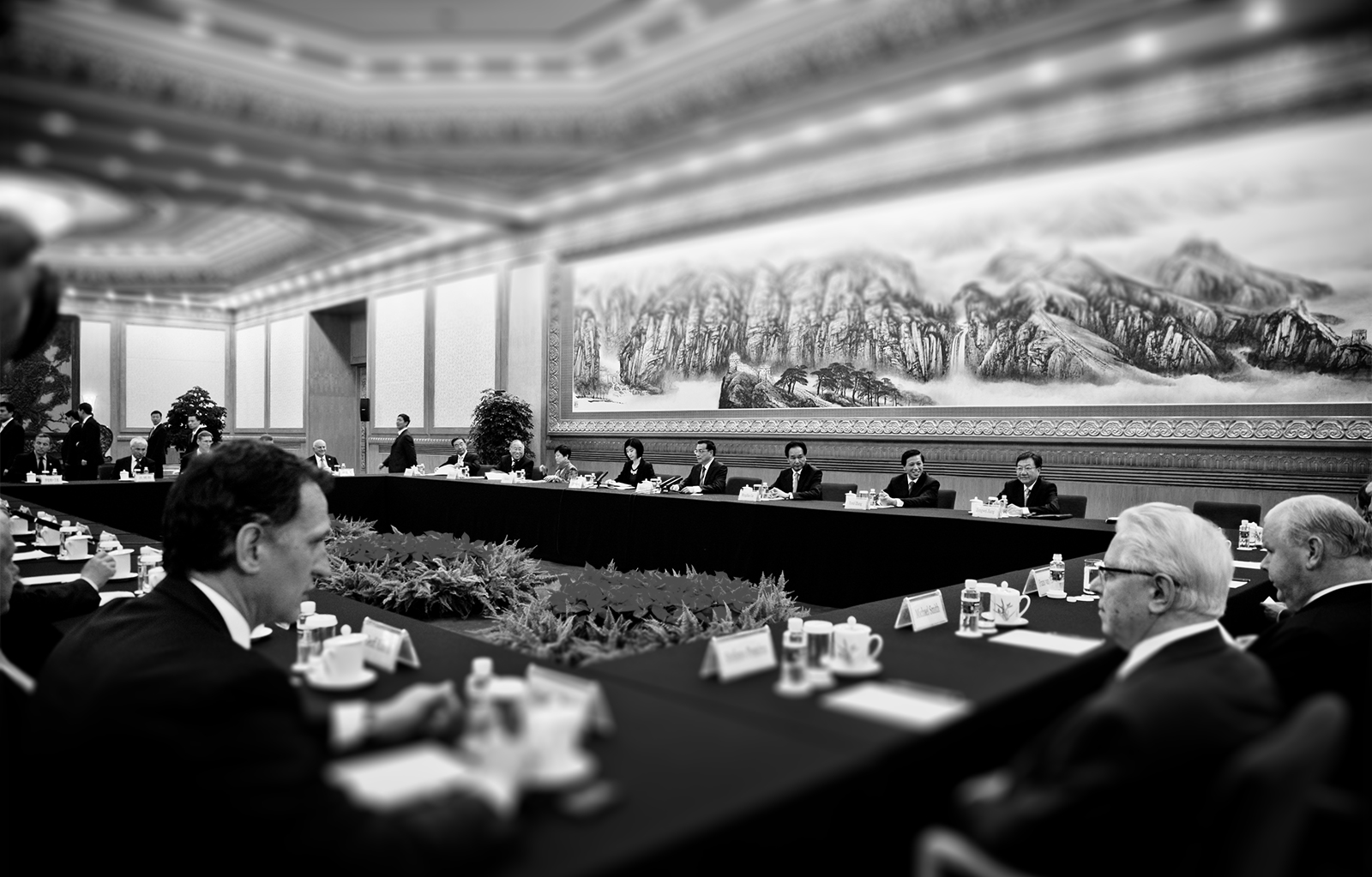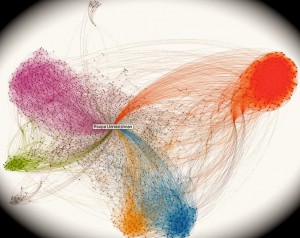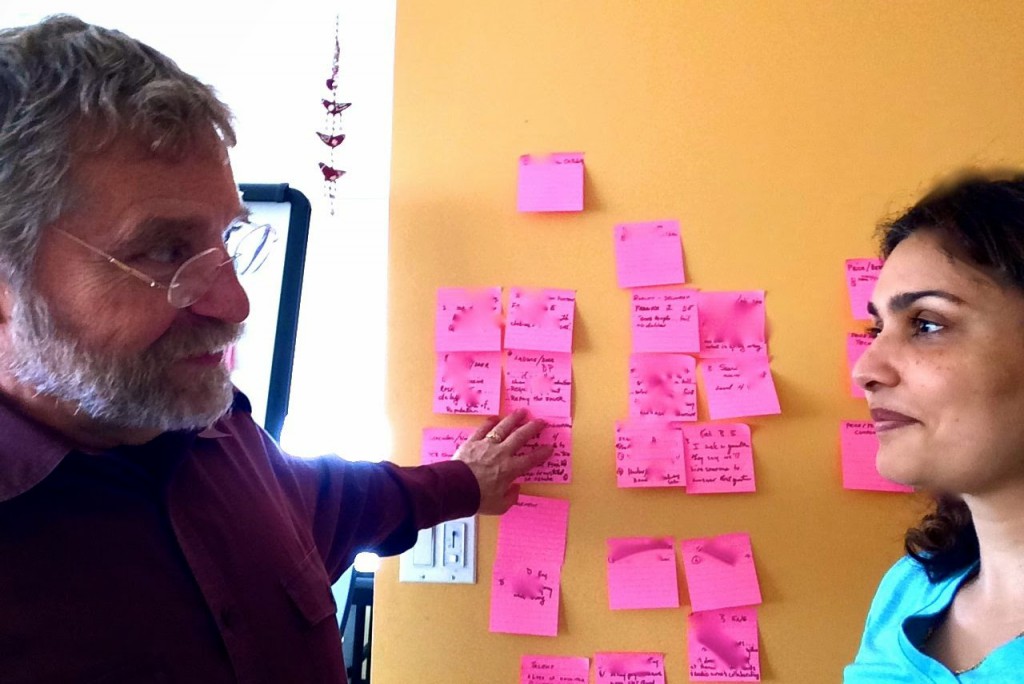
Hardly a day goes by without a company or regional government announcing an innovation center. But this may not be the best way to kindle creativity, writes Roopa Unnikrishnan. Unnikrishnan is the founder of Center10 Consulting, which focuses on innovation, strategy, talent and organizational change. She has more than 15 years’ experience in roles at Fortune 500 companies. Find her on Twitter @roopaonline.
On October 29, Johnson & Johnson (J&J), the New Brunswick, N.J.-based pharmaceutical, medical devices and consumer goods giant, announced the launch of its Asia Pacific Innovation Center. Located in Shanghai with satellites in Singapore, Australia and Japan, this unit extends the J&J innovation network beyond its original chain of facilities in London, California and Boston. While laudable, J&J should think more innovatively about how it might source innovation. Some of the more interesting consumer and digital plays continue to come from unexpected places. In today’s age, it is time to start thinking about virtual networks rather than centers that require personnel and capital-intensive investments. Instead of a chain of pearls, a more appropriate metaphor might be a net of diamonds — with links in Africa, Asia and the Nordics, underpinned by a big data center that leverages customer data and the web.
A report from the Boston Consulting Group (BCG) on the most innovative companies shows an increasing vitality around innovation investment in rapidly developing economies (RDEs) such as China, India, etc. In addition, two-thirds of breakthrough innovators surveyed by BCG said that they often generate new ideas for products and growth from social media and big-data mining. Innovators who have introduced distinctive products have been identified as casting a wider net and building a culture more attuned to breakthroughs than incremental innovation.
What we’re seeing here is a paradigm shift that goes beyond the current approach that looks for hotbeds of creativity. Why does geography feel less critical to innovation these days? The reason, in part, is that all elements of innovation — the innovation value chain, as it were — are slowly decoupling from their traditional physical underpinnings. The innovation value chain — insight, inspiration, design, development and implementation — is shifting to become increasingly virtual and personal.
Traditionally, universities and large companies were seen as the seats of capability building and insight development. This view has been the core of much writing, such as The Geography of Innovation by academic Maryann Feldman, which asserts that product innovation forms clusters in regions that provide access to knowledge and commercialization tools. But a lot has changed in the two decades since this work was published. While traditional centers of innovation such as Silicon Valley or the Route 128 corridor near Boston continue to draw upon the resources of institutions such as Stanford University or MIT, and the entrepreneurial ecosystem that has grown up around them, today that bedrock of knowledge is shifting.
For example, MOOCs (massive open online courses) allow free access to training from the world’s top universities. As these courses proliferate, they will rapidly increase the geographic reach of cutting-edge thinkers and teachers traditionally bound by the high walls of academia. At last count, 2.7 million students used Coursera’s technical courses worldwide. Partnerships have emerged that bow to the power of these tools — for example, Georgia Tech, Udacity and AT&T have teamed up to offer an online master’s degree in computer science. This is a whole new way to advance knowledge and skills. More importantly, there is an emerging group of players who are much more focused on specific competency building — data management, data security, etc. — and they are set to change the paradigm of learning. Rather than front-loading education (getting that master’s degree), will more talented young students opt to build their capabilities along the way through these resources? In a fast-changing world where new paths emerge and old ones wither away almost every day, wouldn’t that seem to be the more rational option?
The emergence of reverse innovation and big data is about finding new spaces for breakthrough innovation.
The emergence of reverse innovation and big data is about finding new spaces for breakthrough innovation. Of course, they take work; it’s not as easy to identify unmet needs as with tried and tested consumer research efforts — shadowing buyers in London department stores, for example. In fact, it’s getting much more interesting to go back to the method’s anthropological roots — to follow the community health worker in India. This is what inspired the insight that it would be best to equip community workers in India with tools to treat patients locally rather than try to transport them to far-away hospitals. Similarly, as data becomes more accessible and diverse, insights are no longer the stronghold of R&D departments.
Design and development have also drifted into the virtual space of the web. For example, collaborators from Chile and Germany engaged with data and insights virtually to create a very real product that addresses the needs of premature infants and their mothers. BabyBe UG created a product that is brilliant in its use of data, sensors and new materials. It consists of three modules: a bionic mattress with a skin-like gel surface that takes on the temperature and gentle shapes of the mother; the “turtle” that rests on the mother and captures her breathing rhythms and heartbeats, and the control module that makes the connection between the turtle and mattress. Neither of the co-founders of BayBe hail from the health care industry; they have sourced their expertise from a virtual network and built from insights generated by data and a deep knowledge of materials. They have spanned the globe as they’ve designed, developed and implemented their product.
Challenging Barriers to Entry
Similarly, outsourced development shops, whether factories-for-hire in China and India or sites like Quirky.com, have challenged traditional barriers to entry. Quirky.com evaluates, selects and funds innovation production based on the wisdom of the community. Thousands of creative people around the world have submitted their ideas to be evaluated by Quirky, and participants can vote for those with the most potential.
Finally, centers of influence have been crafted around access to capital, technology and talent — the building blocks of implementation. Capital access is being transformed. The extreme case is, of course, Kickstarter. This is not just a way to get the recording of a new song financed. In 2013, a record $10.3 million was raised by the Pebble smartwatch, which caught fire due to its design and compatibility with multiple platforms, including Android and Apple’s iOS. Not only did this peer-to-peer financing approach deliver the capital, it built a following as evidenced by the fact that Best Buy began selling the Pebble in July 2013, and was sold out in five days.
At the more sophisticated end of peer-sourced capital, Sand Hill Exchange is an aggregating marketplace for users to trade startup futures. Sand Hill allows investors and non-investors alike to participate in the growth of emerging companies. By crowdsourcing sentiment, they provide transparency to the startup valuation process. The exchange also clumps similar startups together, creating a view of where transformative efforts are focused. Additionally, it provides a new mechanism to funnel capital to startups, rather than tapping the usual suspects — venture capitalists and institutional investors.
As for company investments, BCG’s study shows that firms in emerging markets are outpacing those in other nations at increasing R&D and innovation funds; almost three-quarters of companies located in RDEs expect to increase spending on innovation next year, compared with only 57% of companies in developed countries.
Technology is increasingly accessible through software as a service, and cloud computing is redefining the “company.” End-users access cloud-based applications through a web browser or mobile app while user data is stored on servers at a remote location. So, one-member or small organizations now have professional management, communications, CRM and financial systems that were hitherto the realm of large enterprises. As a result, more than a third of all Americans are classified as freelance or “independent” workers.
As for talent, when the New York Federal Reserve Bank named Freelancers Union founder Sara Horowitz last year to its board of directors, it sent a signal that the ranks of the self-employed are growing in the halls of big finance. In this new world, these young innovators remained in their milieu, met online, designed a concept, prototyped, produced and got a product into production without the supply chain management issues or billing conflicts that often plague larger enterprises.
So, where does that leave us?
Practically, of course, large companies tend to be key drivers in the economy. Their genius lies in reach (scale), governance (regulation) and operations (manufacturing, brand-building and sales). But more and more, as the “big whales” of innovation get rarer, and as innovations become more dependent on weak signals, entrepreneurs are the innovators of the economy. Large companies may provide for 99% of the economy’s actual wealth and productive work. However, the 1% of entrepreneurs who succeed has the potential to set new directions.
A Portfolio Approach to Innovation
Environments that provide entrepreneurs with access to the capital, infrastructure and policy support they need are in essence putting into place their version of a portfolio approach to innovation. Entrepreneurs are the test balloons for future growth, and they are rarely sticking to specific geographies. UNESCO sponsors an innovation observatory called Netexplo, a network of more than 200 journalists, scientists and academics who detect outstanding initiatives in the Internet and digital technology. Since 2008, this group has recognized 100 digital innovators, who it says have spurred some of the most significant changes in their environments or in changing the assumptions of an industry. The top six are recognized with awards, and the top of that list is proof positive that geography may be replaced by platforms and networks.
Entrepreneurs are the test balloons for future growth, and they are rarely sticking to specific geographies.
For example, the non-profit Ushahidi was born to address a specific crisis –the violence that broke out after Kenya’s disputed election in 2007. Co-founder Ory Okolloh called for a simple tool to map violence anonymously and hence help to prevent it. Post-crisis, Ushahidi set out to build a product that solves the problems created when digital infrastructure is spotty. Ushahidi’s robust, beautifully designed BRCK wireless network generator isn’t the only sensation, however. Ushahidi has come to represent the people behind a platform that powers the collaboration of Kenyan citizen journalists. The website has 45,000 users in Kenya. Since early 2008, Ushahidi’s efforts have grown from an ad hoc group of volunteers to a focused organization of individuals with a wide span of experience ranging from human rights work to software development, as well as a strong team of volunteer developers primarily in Africa. This ecosystem of innovators has developed seven innovative products and services that are focused on doing good, but are also easily leverageable commercially.
Other Netexplo award winners come from emerging innovation ecosystems, such as the justice crowdsourcing site and app Social Cops from India, or the digital taste generator called the “digital lollipop” from Singapore. The former has a global advisory board, and the latter was developed at the National University of Singapore by Sri Lankan researcher Nimesha Ranasinghe.
What’s the next iteration of the Innovation Center?
Lately, I’ve spent at least some time each morning on a small number of websites that get the juices flowing. Producthunt.com and Sandhill.Exchange are two examples of a whole new generation of innovation ecosystems.
Product Hunt is a curation of the best new products emerging every day. It helps you discover the latest mobile apps, websites and technology products that are in early stages, and the magic in the system lies in the insights that the founders of these startups get from functional and industry experts who are invited to be contributors in the system.
These are the types of innovation ecosystem disrupters and platforms that allow a lone Icelandic innovator to dream global thoughts. Maybe Silicon Valley and Silicon Alley should consider how companies and individuals the world over are using the tools these firms have developed in past decades to create a network of innovation that is sensitive to the inspiration and innovation happening across the globe. Open up your minds and purses, I say. More importantly, don’t keep trying to get these amazing enterprises to come to you — find a way to get to them.
Originally by Roopa Unnikrishnan, Source: Nov 20, 2014, Knowledge@Wharton









